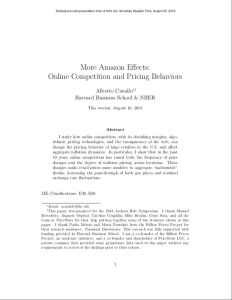
Read or listen offline
自动生成的音频
1×
自动生成的音频
Recommendation
According to US government data, almost 10% of total retail sales take place via e-commerce. Compared to traditional brick-and-mortar sellers, online vendors tend to adjust their pricing more frequently and set identical prices across geographies. This “Amazon effect” may be one driver of lower inflation levels in the US economy. Professor Alberto Cavallo scrutinizes the economics of the online sales environment and its ramifications on inflation. Although it could have been more succinct, this scholarly report will nonetheless reward analysts and policy experts who wish to explore the nuances of online pricing.
Take-Aways
About the Author
Alberto Cavallo is an associate professor at Harvard Business School.
Learners who read this summary also read
Article
Book
Book
Book
















Comment on this summary or 开始讨论